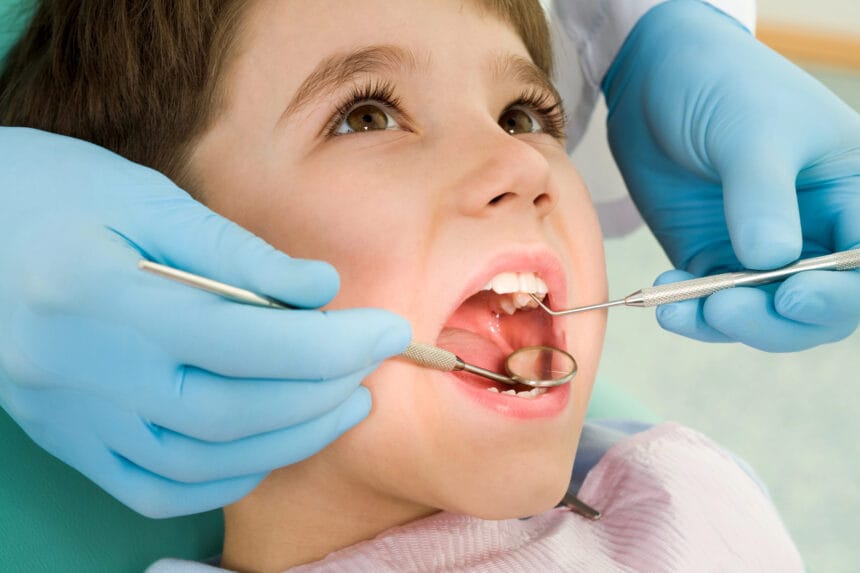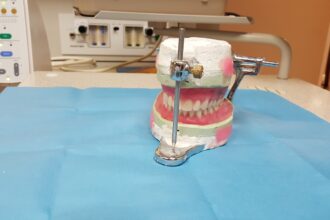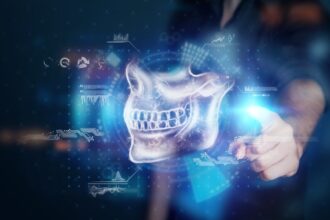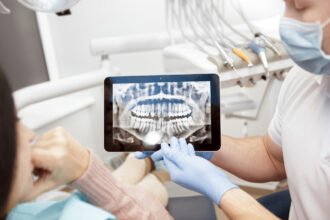In recent years, teeth whitening procedures have become one of the most sought-after aesthetic dental treatments in Ireland. The desire for a brighter, more confident smile has driven significant advancements in the technology used by teeth whitening clinics across the country. Modern techniques have transformed traditional whitening methods into sophisticated, safe, and highly effective procedures tailored to individual needs.
In this article, we will explore the key technologies currently employed by Irish teeth whitening clinics, from laser whitening to AI-driven diagnostic tools. Each of these technologies contributes to delivering faster, more effective, and more comfortable whitening experiences for patients throughout Ireland.
Laser Teeth Whitening
Laser teeth whitening, often referred to as power bleaching, remains one of the most advanced teeth whitening techniques available. This procedure involves applying a gel containing active bleaching agents, typically hydrogen peroxide or carbamide peroxide, to the surface of the teeth. A high-energy laser beam is then used to activate the gel, initiating a chemical reaction that breaks down surface and deeper-set stains.
Various clinics like The White House Teeth whitening Clinic in Ireland employ sophisticated laser systems such as the Beyond Polus Advanced, which features LightBridge™ technology—a blend of LED and filtered halogen blue light. This system has the capability to deliver powerful whitening without exposing the patient to harmful UV rays or heat, ensuring both safety and comfort.
A key advantage of laser whitening is its customisability. The intensity and exposure duration of the laser can be precisely adjusted to suit individual tooth conditions and sensitivity levels. This allows dental professionals to personalise treatments based on the degree of discolouration and the patient’s unique dental profile. The precision and efficiency of laser whitening often result in noticeable improvements after just one 45-minute session, making it a popular choice for patients looking for rapid results.
LED Light-Activated Whitening Systems
LED light technology has become increasingly common in clinics across Ireland due to its non-invasive nature and suitability for patients with tooth sensitivity. While not as intense as laser light, LED systems are highly effective when paired with peroxide-based whitening gels.
The procedure involves applying a whitening gel to the teeth and then exposing the area to a high-intensity LED light, usually blue in colour. This light accelerates the chemical reaction of the gel, enhancing stain breakdown while generating minimal heat. This significantly reduces the likelihood of enamel irritation or discomfort.
Some clinics in Ireland use systems such as White By Light, which combines blue, violet, and infrared wavelengths. This combination not only improves whitening efficacy but also contributes to the reduction of oral bacteria, offering additional oral health benefits.
Treatment typically involves three to four cycles of 10–15 minutes under the light. In most cases, patients see their teeth lighten by up to eight shades in a single visit. The process is fast, painless, and ideal for individuals looking for cosmetic enhancement before weddings, job interviews, or other special events.
Advanced Whitening Gels and Nanotechnology
Modern clinics in Ireland are also benefiting from significant advancements in the chemistry of whitening gels. Many whitening agents now incorporate nanotechnology, making them more effective at stain removal and enamel protection.
Gels infused with nanoparticles such as hydroxyapatite (HA) and titanium dioxide (TiO₂) mimic the natural mineral structure of tooth enamel. These components not only aid in the whitening process but also help to remineralise the enamel, reducing post-treatment sensitivity and strengthening the tooth surface.
Other formulations include activated charcoal nanoparticles and carbon nanotubes, which are designed to lift surface stains through adsorption. These gels are particularly useful for removing extrinsic stains caused by coffee, tea, red wine, or tobacco.
In addition to professional in-clinic treatments, dentist-recommended whitening toothpastes with nano-hydroxyapatite offer a complementary at-home maintenance solution. These products not only extend the longevity of in-office treatments but also promote ongoing oral health by reducing sensitivity and preventing plaque build-up.
Custom-Fitted Whitening Trays Using Digital Scanning
One of the most effective supplementary methods to in-clinic whitening is the use of custom-fitted whitening trays, which are often offered as part of a take-home treatment plan. Instead of using traditional moulds, many Irish clinics now employ intraoral digital scanners like iTero or 3Shape TRIOS to create a precise 3D model of the patient’s teeth.
This model is then used to fabricate perfectly contoured trays that ensure even distribution of whitening gel while preventing leakage onto gums. Custom trays are far more effective and comfortable than generic, over-the-counter alternatives.
Because the trays fit snugly, they help to maximise contact between the gel and tooth enamel while minimising gum irritation, a common issue with ill-fitting whitening trays. Patients typically wear the trays for a set duration each day over a week or two, achieving gradual but significant whitening results.
Some clinics offer combination whitening packages, pairing an initial in-clinic laser or LED session with take-home custom trays for long-term maintenance.
AI-Driven Diagnostic and Treatment Planning Tools
Digital technology and artificial intelligence (AI) are becoming integral in how clinics design and execute teeth whitening treatments. Before any whitening procedure, clinics often conduct a detailed digital assessment of a patient’s dental profile.
AI-driven tools and digital shade-matching systems like VITA Easyshade use spectrophotometric analysis to determine the exact starting shade of the teeth. These systems also simulate post-treatment outcomes, allowing both clinician and patient to align expectations before the procedure begins.
AI can also be used to recommend the best treatment method based on various factors including enamel thickness, existing sensitivity, stain type, and dental history. By leveraging machine learning algorithms, these systems ensure treatment precision, reduce unnecessary exposure to bleaching agents, and minimise risks such as patchy or uneven whitening.
Some clinics even integrate mobile apps that enable patients to track their whitening progress through photo documentation and provide reminders for gel applications in at-home treatments.
Cold Light Whitening Systems
Another innovation gaining traction in Ireland is the use of cold light whitening technology, which uses blue light filtered through over 12,000 optical fibres and over 30 layers of coating to eliminate heat. Unlike traditional systems, cold light significantly reduces thermal exposure, making it a safer option for patients prone to tooth sensitivity.
These systems are often combined with peroxide-free whitening gels, offering a gentler alternative for patients with severe enamel erosion, gum issues, or allergies to hydrogen peroxide.
Clinics using cold light technology report a reduced risk of dehydration of the enamel, a side effect that can cause teeth to temporarily look chalky or blotchy after whitening.
Endnote
Modern teeth whitening clinics in Ireland are equipped with a wide array of cutting-edge technologies designed to meet diverse patient needs. Whether it’s laser-based precision whitening, LED-accelerated bleaching, nanoparticle-infused gels, custom-fitted trays, or AI-assisted diagnostics, these innovations work together to ensure safe, effective, and tailored whitening experiences.
Patients today can expect not only stunning cosmetic results but also enhanced comfort, shorter treatment times, and minimal sensitivity. The integration of these technologies places Irish clinics at the forefront of cosmetic dentistry, enabling them to deliver consistently brilliant smiles backed by the best in modern science.










